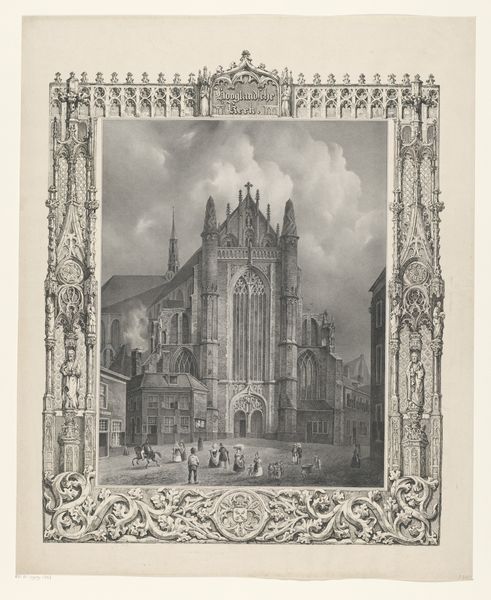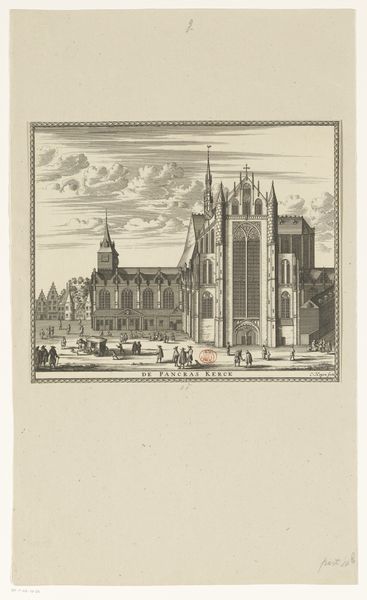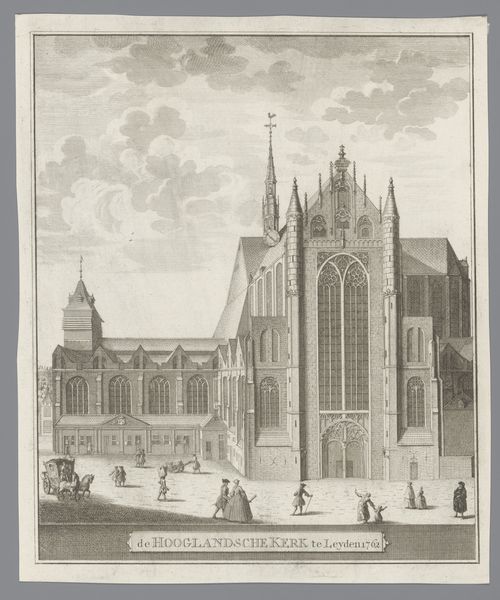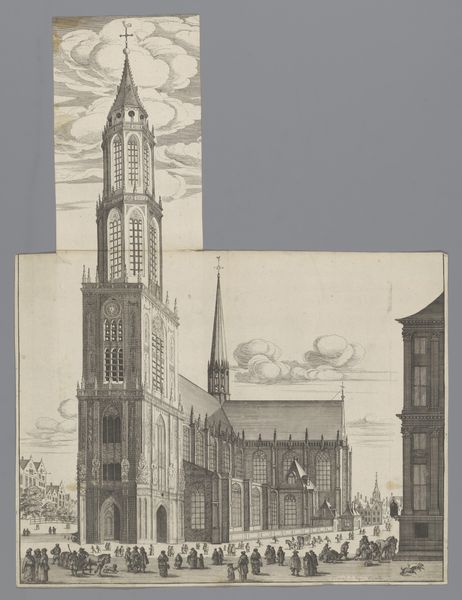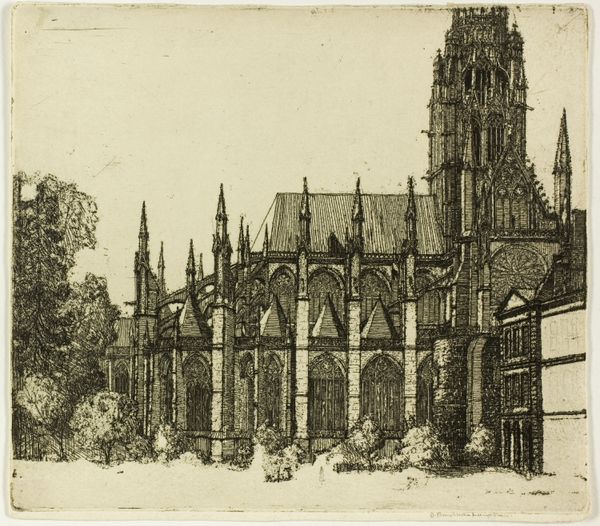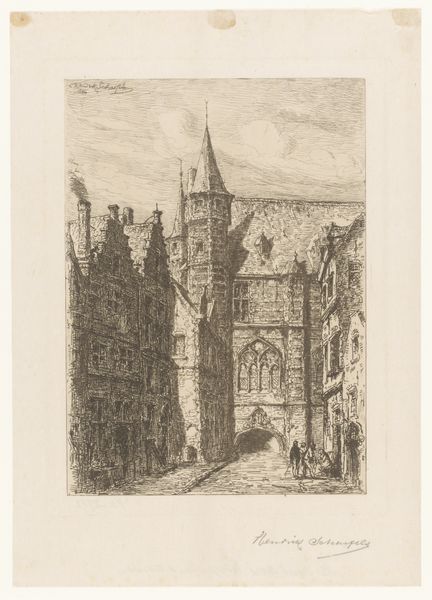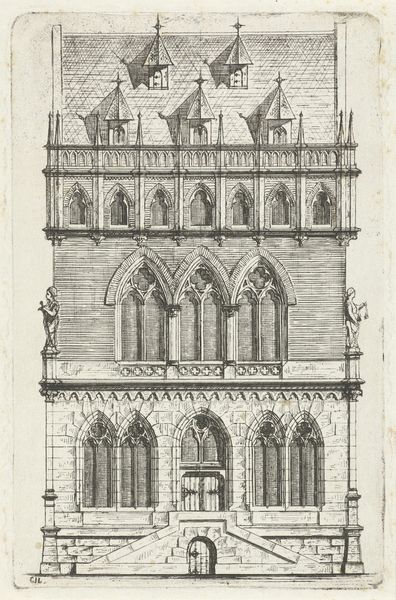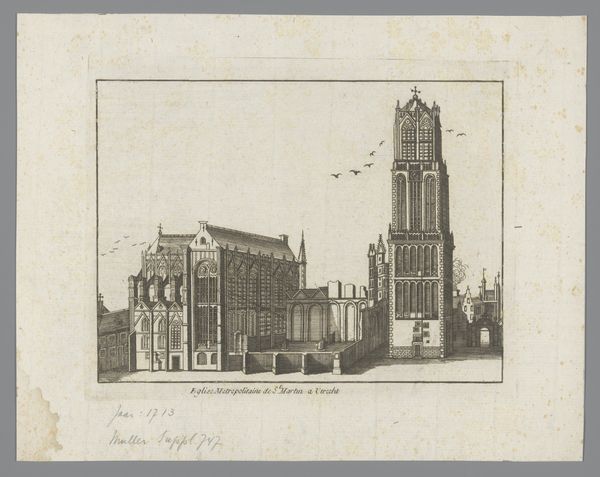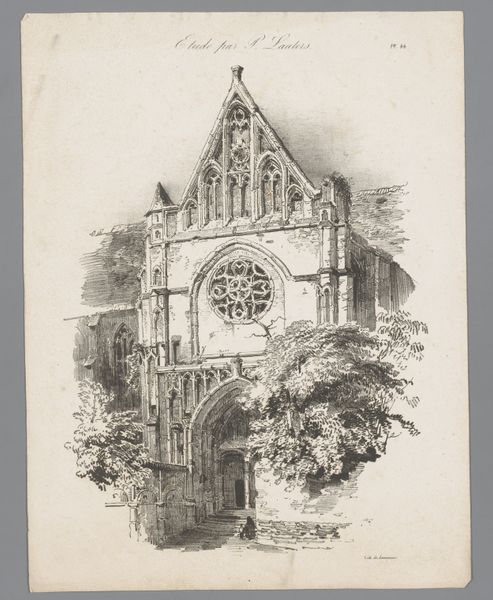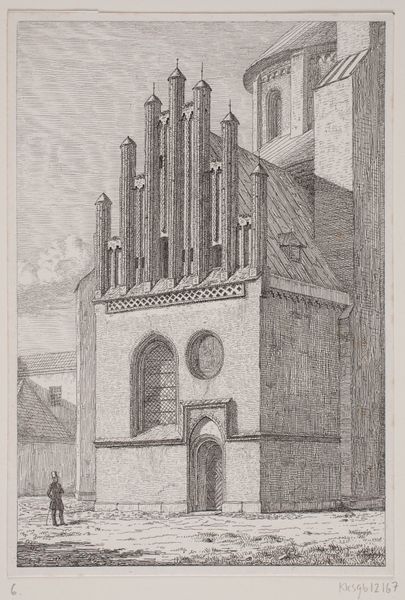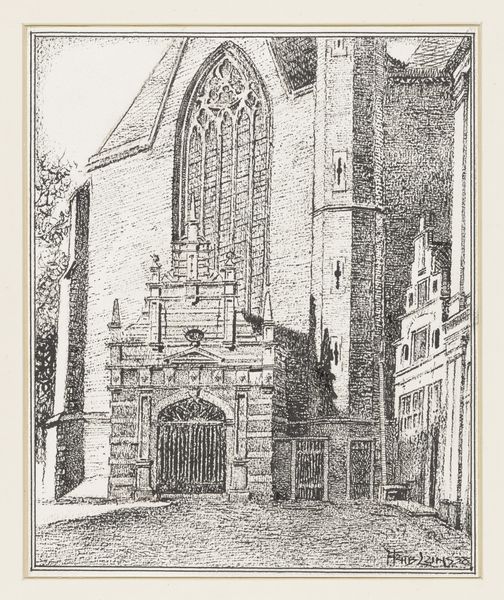
drawing, paper, ink, architecture
#
drawing
#
aged paper
#
mechanical pen drawing
#
pen sketch
#
old engraving style
#
sketch book
#
paper
#
personal sketchbook
#
ink
#
sketchwork
#
pen-ink sketch
#
line
#
pen work
#
cityscape
#
storyboard and sketchbook work
#
architecture
#
realism
Dimensions: height 283 mm, width 185 mm
Copyright: Rijks Museum: Open Domain
Curator: Willem Wenckebach’s “De Nieuwe Kerk te Amsterdam,” created sometime between 1870 and 1926, offers a meticulously detailed pen and ink drawing of the famed church. Editor: Immediately, I am struck by its sheer density. The crisscrossing lines used to depict the building are fascinating. There is this oppressive weight to the architecture, a solemnity almost. Curator: It's interesting that you find it oppressive. I see that solemnity, certainly. However, in its time and considering the urban environment where religion has shaped power structures for so long, I see more of a record. A study. Editor: Precisely! Religion's intersection with urban power is at play here. Think about the implications of this immense structure dominating the cityscape and its symbolic presence as a marker of societal norms, especially for marginalized communities excluded from those spaces. How can such art question authority, especially the subtle colonial forces that influence social identity? Curator: You raise a crucial point. Churches like De Nieuwe Kerk, as physical manifestations of dominant power structures, played a vital role in colonial expansion. However, it also plays as public space where people gathered to debate their opinions on national and global politics. I do wonder about this work, though. As the image isn't very crisp, perhaps created as part of sketchbook work, could it also suggest uncertainty around the institution during periods of secularization, even resistance? Editor: That’s a fascinating question! I believe viewing the architecture here, from the perspective of those often overlooked helps reveal how structures of power manifest materially and visually within the city's collective consciousness. Curator: For me, thinking of the institution represented by the work itself, its making, it seems evident that by using pen and ink on paper Wenckebach is drawing attention to the socio-political structures by situating them in historical records. Editor: It has certainly challenged my perspective, offering fresh appreciation for architecture that invites nuanced perspectives in history. Curator: And it’s given me much to consider, specifically, regarding the relationship between architecture, politics, and society, during the time the artist drew it, as well as in our current age.
Comments
No comments
Be the first to comment and join the conversation on the ultimate creative platform.
